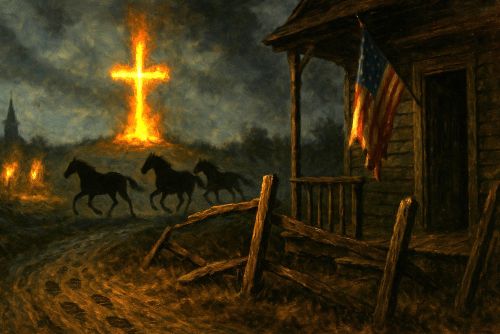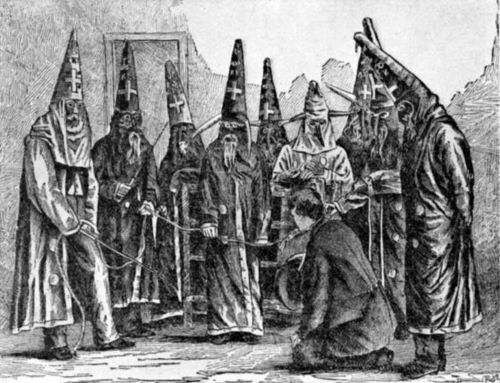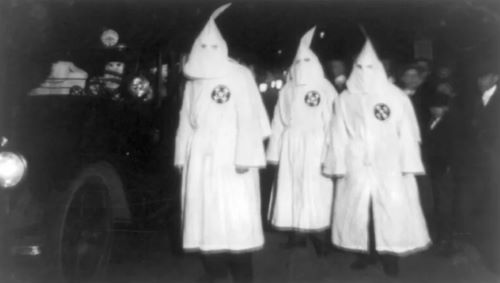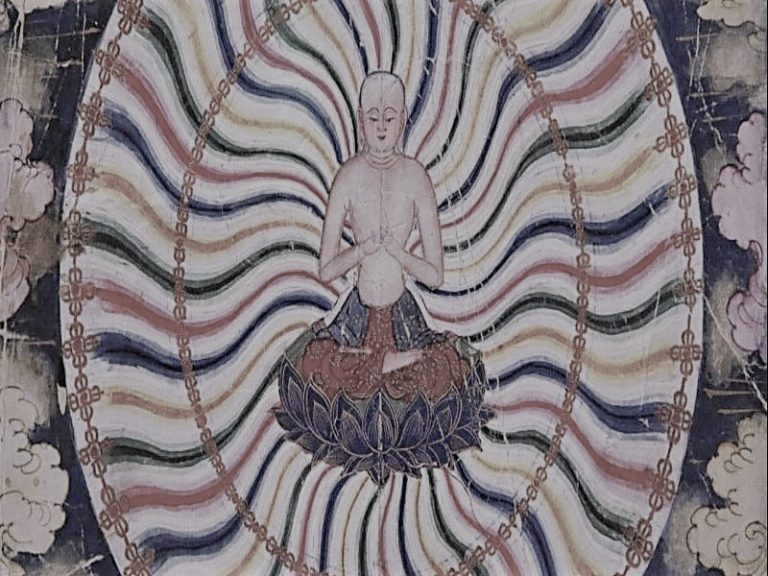

The Ku Klux Klan during Reconstruction was more than a vigilante group. It was a cultural movement that turned violence into ritual, and ritual into belonging.

By Matthew A. McIntosh
Public Historian
Brewminate
Introduction
“The mask, the burning cross, the midnight ride: all served the same function as today’s digital memes: terror and belonging, fused.” The Ku Klux Klan emerged in the aftermath of the Civil War as one of the most infamous embodiments of that principle. While the Confederacy fell on the battlefield, white supremacy reconstituted itself in ritual, spectacle, and violence.
The Reconstruction era offered the promise of freedom and civic participation for formerly enslaved people, but it also produced an intense backlash. The Klan fused religious imagery, performative intimidation, and the bonds of community into a movement that was as much cultural as it was violent. In doing so, it revealed how terror could be woven into the fabric of identity, binding perpetrators together as tightly as it subjugated their victims.
Origins and Early Growth
From Social Club to Paramilitary Force

Founded in Pulaski, Tennessee, in late 1865, the Klan began as a loose association of former Confederate soldiers. Initially described as a fraternal order or social club, it quickly assumed a darker purpose. Within a year, its members were staging masked rides, harassing freedpeople, and attacking Republican officials who supported Reconstruction.1
The collapse of Confederate authority left a vacuum. For many ex-Confederates, the Klan became a vehicle to reassert dominance under a cloak of secrecy. Its rituals and costumes lent cohesion, while its violence communicated to both allies and enemies that white supremacy remained unbroken.
The Spread Across the South
The Klan’s appeal lay in its adaptability. Local chapters operated semi-independently, tailoring violence to community anxieties. In some counties, the targets were Black voters and officeholders. In others, white schoolteachers, Union veterans, or federal officials bore the brunt. By 1868, the Klan had become a regional phenomenon, drawing thousands into its network of night riders.2
Religious Symbolism and Sacred Terror
The Cross and the Cloak

The Klan’s rituals borrowed heavily from religious symbolism. The burning cross, which became its most notorious emblem in later revivals, captured the sense of purification and divine sanction. Hooded costumes evoked both mystery and authority, transforming ordinary men into spectral figures of judgment.3
This fusion of violence with sacred imagery granted terror a moral veneer. Attacks were framed not simply as reprisals but as acts of guardianship, as if God himself had deputized the night riders. In churchgoing communities, the language of faith lent legitimacy to acts of brutality.
Sermons and Justifications
Clergymen sympathetic to the cause reinforced this connection. Some delivered sermons that described Reconstruction as a punishment inflicted on the South by a corrupt federal government, portraying the Klan as defenders of Christian civilization.4 This sacralization of violence blurred the line between civic order and divine mandate.
Fear, Belonging, and Community
Terror as Social Glue

The Klan’s violence did more than intimidate. It also bonded participants. To ride at night in disguise was to become part of a brotherhood, to share secrets and dangers that deepened trust. Fear of outsiders was mirrored by loyalty within, turning terror into community.
This solidarity was crucial in rural areas where kinship networks already ran deep. Men who joined were not faceless recruits but neighbors, cousins, or church elders. The secrecy of the hood heightened the effect. Everyone knew someone was involved, but no one could say exactly who.
The Public Dimension
Though hidden behind masks, the Klan’s actions were designed for visibility. Burning crosses illuminated the night sky. Public whippings and lynchings drew spectators who could not mistake the message. Silence, acquiescence, and even participation by community members helped normalize the Klan’s presence. Violence became a communal ritual, binding perpetrators and bystanders alike into complicity.
Political Violence and the Failure of Reconstruction
Suppressing the Black Vote

The Klan’s central aim was political. Freedpeople who attempted to vote faced intimidation, assault, or murder. Black officeholders, briefly visible in the early years of Reconstruction, became prime targets. Election seasons were punctuated by waves of violence, ensuring that the promise of the Fifteenth Amendment was undermined by fear.5
The Klan also attacked white Republicans (teachers, officials, and Unionists) who worked to enforce Reconstruction. By branding them “carpetbaggers” and “scalawags,” the Klan linked political opposition with betrayal of race and region.
Federal Response
Congress responded with the Enforcement Acts of 1870 and 1871, authorizing federal troops and prosecutions against Klan violence. The Ku Klux Klan Act empowered the president to suspend habeas corpus in order to suppress conspiracies. Hundreds were arrested, and for a time the organization was broken.6 Yet the underlying structures of racial violence endured, mutating into other forms long after the Klan’s decline.
The Afterlife of the Klan
Rituals Reborn

Although the original Klan collapsed in the 1870s, its symbols proved enduring. In the early twentieth century, a second Klan revived the burning cross and expanded membership nationwide. The continuity of imagery reveals how symbols outlast organizations, carrying terror across generations.
Cultural Memory and Digital Echoes
The Reconstruction Klan’s blend of ritual and violence has unsettling parallels today. Online extremist groups cultivate belonging through memes, avatars, and coded language, much as the Klan used masks, crosses, and night rides. Both operate by fusing community with intimidation, producing cultures where fear and identity reinforce one another.
Conclusion
The Ku Klux Klan during Reconstruction was more than a vigilante group. It was a cultural movement that turned violence into ritual, and ritual into belonging. Its religious symbolism, communal bonds, and public performances made terror not only effective but enduring.
By examining the Klan’s methods, we see how violence can be woven into the ordinary, sanctified through faith, and normalized by community complicity. The echoes of those nights still sound in modern extremist subcultures, where new symbols perform the same work of binding followers and terrifying enemies.
The mask, the burning cross, the midnight ride: each was more than a gesture. Together they were a grammar of fear, a system of signs that ensured white supremacy would survive defeat on the battlefield. And as long as movements continue to blend identity with intimidation, the lessons of Reconstruction remain tragically relevant.
Appendix
Notes
- Allen W. Trelease, White Terror: The Ku Klux Klan Conspiracy and Southern Reconstruction (New York: Harper & Row, 1971).
- Eric Foner, Reconstruction: America’s Unfinished Revolution, 1863–1877 (New York: Harper & Row, 1988).
- David M. Chalmers, Hooded Americanism: The History of the Ku Klux Klan (Durham: Duke University Press, 1965).
- Elaine Frantz Parsons, Ku-Klux: The Birth of the Klan during Reconstruction (Chapel Hill: University of North Carolina Press, 2015).
- Foner, Reconstruction.
- Trelease, White Terror.
Bibliography
- Chalmers, David M. Hooded Americanism: The History of the Ku Klux Klan. Durham: Duke University Press, 1965.
- Foner, Eric. Reconstruction: America’s Unfinished Revolution, 1863–1877. New York: Harper & Row, 1988.
- Parsons, Elaine Frantz. Ku-Klux: The Birth of the Klan during Reconstruction. Chapel Hill: University of North Carolina Press, 2015.
- Trelease, Allen W. White Terror: The Ku Klux Klan Conspiracy and Southern Reconstruction. New York: Harper & Row, 1971.
Originally published by Brewminate, 09.15.2025, under the terms of a Creative Commons Attribution-NonCommercial-NoDerivatives 4.0 International license.


